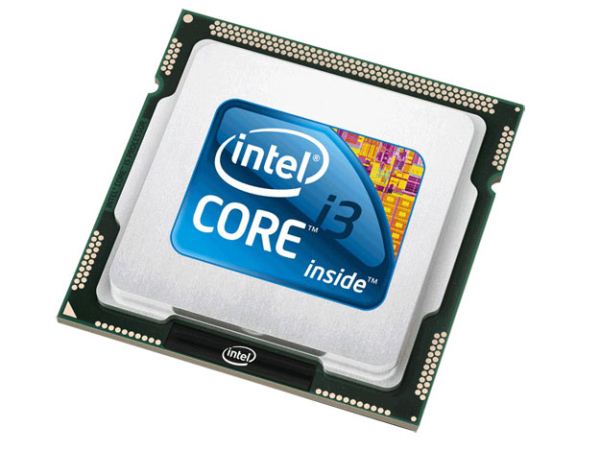Getting the Best out of an Ivy Bridge HTPC: Windows 8, madVR and More..
by Ganesh T S on January 20, 2013 3:00 PM EST- Posted in
- Home Theater
- Intel
- HTPC
- Ivy Bridge
- Windows 8
- Passive Cooling
Concluding Remarks
Our experience with a passive Ivy Bridge HTPC has brought to fore many interesting aspects. On the surface, Windows 8 doesn't have any capabilities to tempt users to upgrade. In fact, the removal of Windows Media Center and presenting it as a separate $10 upgrade has actually served as a deterrent for many HTPC users. I would strongly suggest HTPC users relying on WMC (irrespective of the OS) to move on to other platforms. However, a few days of using Windows 8 as our primary HTPC OS has completely altered our opinion.

Overall, Windows 8 seems to be a very efficient OS (in terms of boot time as well as power consumption). GPU acceleration for video decode and playback is very well integrated and acts in an effective manner for all types of streaming services (including Netflix and YouTube). Not only do we get higher quality material delivered to the Netflix app, the power consumption during playback is actually a full 15 W lower. XBMC and JRiver MC18 work without issues on Windows 8.
The Intel HD 4000 GPU is quite capable of madVR with the default scaling algorithms as long as it is paired with DDR3-1600 DRAM. On our system, we were able to get madVR working without issues. The DXVA scaling feature of madVR enables users to get good scaling quality in a power efficient manner, thanks to the hardware scalers in the HD 4000 GPU. Of course, the GPU is going to struggle with advanced scaling algorithms. We will cover that (along with 4K decode and display performance) in the third and final installment of our HTPC series. The concluding piece will pit the latest passive HTPC GPUs from AMD and NVIDIA against each other and provide readers with the insights on what exactly they have to offer over the Intel HD 4000 GPU.











138 Comments
View All Comments
damianrobertjones - Monday, January 21, 2013 - link
It's hardly difficult to use Windows 8! Heck a few of the ladies in work purchased laptops for their kids over xmas with Windows 8 and they're having no issues.... WHy are you??? Makes no sense at alllotharamious - Monday, January 21, 2013 - link
No real useful advantages. But, it's $40. Oh yeah, and new task manager, new file copy dialog, storage spaces, data deduplication, WAY less naggy updates, fast boot (way faster than 7), extra dimension in your start menu for more stuff.Nothing at all.
ol1bit - Friday, January 25, 2013 - link
My Win 7 HTPC works just fine with my network streaming Silcon Dust dual tuner.I rebuilt by gaming PC with Windows 8 and after a week I couldn't take it anymore, re-installed Win7-64bit.
-Stupid UI
-Dumbed down for Grandpa and Grandma
- Stupid colors in office (aka none per se)
- COD4 and older games don't work.
Win7 has none of these issues, so if the only benefit I get is a netflix app that uses a tad less power, and a crappy UI forget it.
JlHADJOE - Sunday, January 27, 2013 - link
"Fast boot" is fast because it changes normal shutdown to "hibernate".If you force the OS to do a proper reboot, there's no improvement over 7.
justniz - Monday, February 11, 2013 - link
Actually you can do a lot more with Linux than just surf YT. Check out MythTV. It is a VERY capable PVR/HTPC suite.In my opinion, much better than any product available for windows, and free too.
SantaAna12 - Sunday, January 20, 2013 - link
Aii yii yii!No I dont have Windows Pro 8.....pay up!
a2f - Sunday, January 20, 2013 - link
Is there any way we could get a look at how you have configured the various settings for the LAV filters and madVR for our own personal testing?Mangix - Sunday, January 20, 2013 - link
in regards to the refresh rate issue, which i am not too familiar with, have you tried modifying the EDID in the registry to help fix it?link: http://www.monitortests.com/forum/Thread-Custom-Re...
dubya911 - Sunday, January 20, 2013 - link
How do the final capabilities of this compare to the plethora of android mini PCs floating around? Things like the MK802, G-Box etc seem to have a beta version of XBMC with network storage support now. Or if you want to move upscale a bit googleTV, Roku etc?Other than the fun of putting it together is there an upside? My napkin math puts this build north of $600. That is a lot of delta to make up.
edlee - Sunday, January 20, 2013 - link
You are absolutely right.I have a set up One Raid -5 Xeon E2-1235 file server with a bunch of different DLNA servers programs to work with different client devices.
for example:
PS3 media server for my PS3
Servio for my Sony blu-ray players and smart tv devices
Plex for my roku
Qloud Media server for my android clients
This way I dont have to setup an expensive HTPC in every watching location, and the Xeon e2-1235 is comparable to i7-2600 so it has all the processing power to handle video transcoding in software, until these apps update their encode engine to take advantage of quick sync.